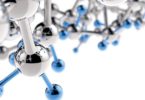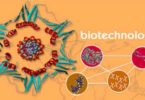Ques. Postulate of kinetic theory is
(a) Atom is indivisible
(b) Gases combine in a simple ratio
(c) There is no influence of gravity on the molecules of a gas
(d) None of the above
Ques. Dimensions of pressure are the same as that of
(a) Energy
(b) Force
(c) Energy per unit volume
(d) Force per unit volume
Ques. The kinetic theory of gases perdicts that total kinetic energy of a gaseous assembly depends on
(a) Pressure of the gas
(b) Temperature of the gas
(c) Volume of the gas
(d) Pressure, volume and temperature of the gas
Ques. At 100oC and 1 atm, if the density of liquid water is 1.0 g cm–3 and that of water vapour is 0.0006 g m–3, then the volume occupied by water molecules in 1 litre of steam at that temperature is
(a) 6 cm3
(b) 60 cm3
(c) 0.6 cm3
(d) 0.06 cm3
Related: Electric Field conceptual question
Ques. The density of air is 0.00130 g/ml. The vapour density of air will be
(a) 0.00065
(b) 0.65
(c) 14.4816
(d) 14.56
Ques. The density of neon will be highest at
(a) S.T.P.
(b) 0o, 2 atm
(c) 273o C, 1 atm
(d) 273o C, 2 atm
Ques. Kinetic energy of a gas depends upon its
(a) Molecular mass
(b) Atomic mass
(c) Equivalent mass
(d) None of these
Ques. Absolute zero is defined as the temperature
(a) At which all molecular motion ceases
(b) At which liquid helium boils
(c) At which ether boils
(d) All of the above
Related: What is the electric current Questions / Answers
Ques. Vibrational energy is
(a) Partially potential and partially kinetic
(b) Only potential
(c) Only kinetic
(d) None of the above
Ques. Ratio of Cp and Cv of a gas ‘X‘ is 1.4. The number of atoms of the gas ‘X‘ present in 11.2 litres of it at N.T.P. is
(a) 6.02 x 1023
(b) 1.2 x 1024
(c) 3.01 1023
(d) 2.01 x 1023
Ques. An ideal gas will have maximum density when
(a) P = 0.5 atm, T = 600 K
(b) P = 2 atm, T = 150 K
(c) P = 1 atm, T = 300 K
(d) P = 1.0 atm, T = 500 K
Ques. If the inversion temperature of a gas is –80oC, then it will produce cooling under Joule-Thomson effect at
(a) 298 K
(b) 273 K
(c) 193 K
(d) 173 K
Related: Magnetic effects of electric current
Ques. According to kinetic theory of gases, for a diatomic molecule
(a) The pressure exerted by the gas is proportional to the mean velocity of the molecules
(b) The pressure exerted by the gas is proportional to the root mean square velocity of the molecules
(c) The root mean square velocity is inversely proportional to the temperature
(d) The mean translational kinetic energy of the molecules is proportional to the absolute temperature
Ques. At STP, 0.50 mol H2 gas and 1.0 mol He gas
(a) Have equal average kinetic energies
(b) Have equal molecular speeds
(c) Occupy equal volumes
(d) Have equal effusion rates
Ques. The average K.E. of an ideal gas in calories per mole is approximately equal to
(a) Three times the absolute temperature
(b) Absolute temperature
(d) 1.5 times the absolute temperature
Ques. Which of the following is valid at absolute zero
(a) Kinetic energy of the gas becomes zero but the molecular motion does not become zero
(b) Kinetic energy of the gas becomes zero and molecular motion also becomes zero
(c) Kinetic energy of the gas decreases but does not become zero
(d) None of the above
Ques. If P, V, M, T and R are pressure, volume, molar mass, temperature and gas constant respectively, then for an ideal gas, the density is given by
(a) RT/PM
(b) P/RT
(c) M/V
(d) PM/RT
Related: Protein synthesis quiz questions
Ques. Helium atom is two times heavier than a hydrogen molecule at 298 K, the average kinetic energy of helium is
(a) Two times that of a hydrogen molecule
(b) Same as that of a hydrogen molecule
(c) Four times that of a hydrogen molecule
(d) Half that of a hydrogen molecule
Ques. The translational kinetic energy of an ideal gas depends only on its
(a) Pressure
(b) Force
(c) Temperature
(d) Molar mass
Ques. Internal energy and pressure of a gas per unit volume are related as
(a) P = 2/3 E
(b) P = 3/2 E
(c) P = ½ E
(d) P = 2E
Ques. Indicate the correct statement for a 1-L sample of N2 (g) and CO2 (g) at 298 K and 1 atm pressure
(a) The average translational KE per molecule is the same in N2 and CO2
(b) The rms speed remains constant for both N2 and CO2
(c) The density of N2 is less than that of CO2
(d) The total translational KE of both N2 and CO2 is the same
Related: purification of organic compounds quiz
Ques. Which one of the following statements is NOT true about the effect of an increase in temperature on the distribution of molecular speeds in a gas
(a) The most probable speed increases
(b) The fraction of the molecules with the most probable speed increases
(c) The distribution becomes broader
(d) The area under the distribution curve remains the same as under the lower temperature
Ques. According to kinetic theory of gases, the energy per mole of a gas is equal to
(a) 1.5 RT
(b) RT
(c) 0.5 RT
(d) 2.5 RT
Ques. According to kinetic theory of gases,
(a) There are intermolecular attractions
(b) Molecules have considerable volume
(c) No intermolecular attractions
(d) The velocity of molecules decreases after each collision







This is good start though